New procedure able to treat sands of the Sahara syndrome at its most advanced stages
Whereas medications can effectively treat grades 1 and 2, the performance of a flap rhexis is needed in grade 3.
ROME — One of the most threatening complications of laser in situ keratomileusis (LASIK) is the sands of the Sahara syndrome (SOS). However, an early diagnosis and a prompt treatment, combining medications and some special surgical maneuvers, guarantee successful management of even the most advanced stages of the condition, according to Angelo Appiotti, MD.
“In what I classify as grade 3 SOS, the inflammation melts the stromal tissue, producing irreversible visual loss,” he said. “At this stage, I have introduced a surgical procedure that stops stromal melting and considerably improves the corneal condition.”
To date, Dr. Appiotti has performed more than 6,000 LASIK procedures using six different microkeratomes and the Nidek (Fremont, Calif.) EC-5000 excimer laser. He reported a total of 45 cases of SOS.
“In our practice, we examine the patients shortly after surgery, then at day 1, 4 and 10, as in these first few days they are more at risk of developing SOS,” Dr. Appiotti said. “Should this complication appear, the first thing to keep in mind is that different stages of SOS need different treatments and have different prognoses. A morphologic, three-grade classification is, therefore, very helpful.”
Grades 1 to 2
Grade 1 can be recognized by cellular infiltrates partially covering the interface, and more commonly localized in the superior one-third of the surface. There are no changes in the topographic pattern and no other pathologic signs in the cornea, Dr. Appiotti said.
“At this stage, the threat of corneal melting is very low,” he said. “I treat the patient with steroid drops for 10 days, acetylcysteine for 15 days and antibiotic drops for 7 to 10 days.”
Grade 2 shows a different pattern. The cellular infiltrate can faintly be seen through the entire interface, yet there are no changes in the topography and, once again, no corneal signs are associated.
“Also at this stage, the risk of corneal melting is low. However, a more aggressive approach is needed: lift the flap and irrigate with Ringer Lactate Solution rather than with a balanced salt solution,” Dr. Appiotti said.
The Ringer Lactate Solution rapidly enters the Krebs cycle of the keratocytes, thus increasing their catabolic capacity.
“I also administer autoserum drops in the first 4 days, antibiotics in the following 7 to 10 days and acetylcysteine for 15 days,” he said.
Dr. Appiotti prepares autoserum drops in the following way. He draws out 9 cc of serum, lets it coagulate and centrifuges at 3,000 to 4,000 rpm for 30 minutes. Using a syringe, the serum is then injected into a sterile container.
Grade 3: a dangerous situation
Grade 3 appears as a densely opaque cellular infiltrate entirely covering the stromal interface. Focal nests of agglomerated cells are visible throughout the surface. A punctate keratopathy also may appear, leading the patient to complain about poor, cloudy and blurred vision.
Epithelial surface irregularities and flap edema change the topographic pattern.
“In this advanced stage, corneal melt is likely to occur, causing irreversible visual loss. Treatment should never be delayed and medical therapy alone cannot prevent the inflammation from progressing,” Dr. Appiotti said. He recommends a technique that he defined as “flap rhexis.”
The flap is immediately lifted and rinsed thoroughly in and out with sterile antibiotic steroid solution. It is then repositioned and dried around the edges.
“At this stage, a swelling appears at the center of the cornea. This blister contains the SOS inflammation and produces irregular hyperopic astigmatism,” he said. “Using forceps, I lift the margin of the blister. Then, I tear and remove clockwise the underlying epithelium and Bowmann’s membrane, as if I was performing a capsulorrhexis. After this ‘flap rhexis,’ the cornea presents a central disepithelialized circular area, leaving the stroma untouched. A bandage lens moistened with antibiotic is then applied and left in place for 24 to 36 hours.”
Additional treatments encompass the insertion of a punctal plug and the administration of autoserum drops for 4 days, antibiotics for 15 days and dexpanthenol gel for 7 nights. Topical steroids can be used after the dexpanthenol treatment has been discontinued, as the two drugs are incompatible, Dr. Appiotti said.
“Thanks to the ‘flap rhexis’ procedure and following therapy, the high irregular hyperopic astigmatism caused by the SOS blister changes into a regular hyperopic defect, which can be effectively corrected with spectacles or soft contact lenses. The same pathology, treated only with topical and/or general steroids and antibiotics produces a corneal shrinking and flattening, and a loss of visual acuity that cannot be corrected with spectacles or contact lenses.” he said.
“All my patients have been enhanced after 5 to 6 months with hyperopic nomograms. Final results were in all cases satisfactory. Although the ‘flap rhexis’ procedure may appear rather aggressive, I have been constantly encouraged by the dramatic improvements of the corneal condition obtained with the technique,” Dr. Appiotti said.
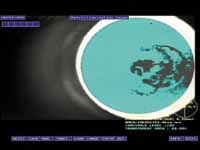 |
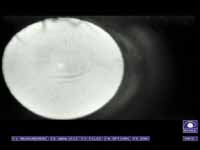 |
| Scheimpflug camera examination shows
grade 1 SOS. |
The same eye examined with contrast
techniques shows a grade 2 SOS. |
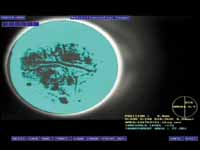 |
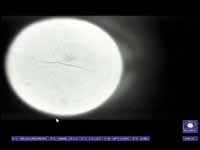 |
| The same eye examined with contrast
techniques shows grade 3 SOS. |
|
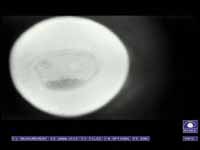 |
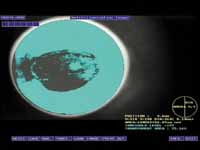 |
| Scheimpflug camera examination shows
flap melting. |
Scheimpflug camera examination shows
SOS with flap melting before flap rhexis. |
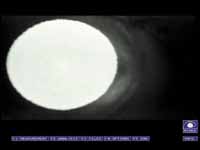 |
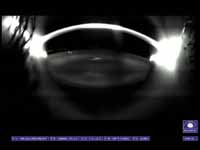 |
| The same eye after flap
rhexis. |
Scheimpflug slit lamp shows grade 3
SOS before flap rhexis. |
For Your Information:
- Angelo Appiotti, MD, can be reached at Via Filippo Civinini 111, 00197 Rome, Italy; (39) 06-8086403; fax: (39) 06-8073765; e-mail: klan@appiotti.it. Dr. Appiotti has no direct financial interest in any of the products mentioned in this article, nor is he a paid consultant for any companies mentioned.
